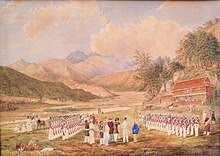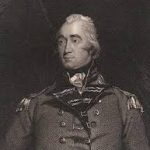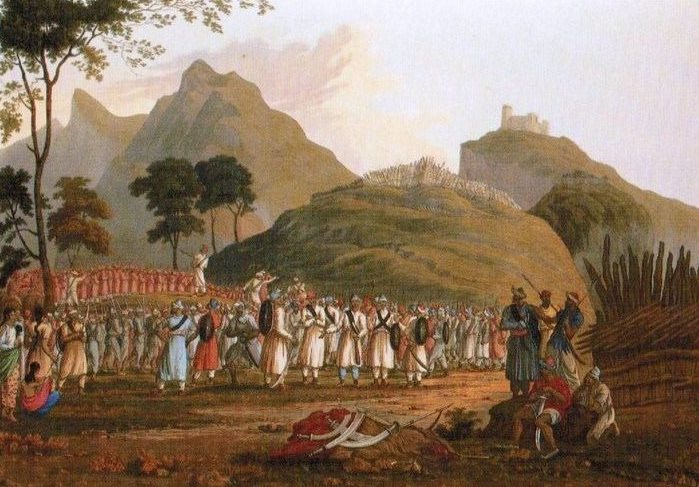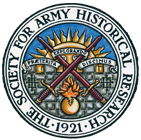Preparing for War
In 1802, the 66th sailed for England after 17 years of overseas service and arrived in Portsmouth on the 24th October before proceeding to Jersey where they stayed for eleven months before moving to Winchester where it was ordered to raise a second battalion in anticipation of war against Napoleon.
In 1804, after being brought up to strength by transfers from the Second Battalion, the First Battalion of the Regiment left Winchester for Portsmouth 1000 bayonets strong and sailed on board the East Indiamen Brunswick, Canton and Marquis of Ely, to Tricomalee in Ceylon. (See ‘Nathaniel Dance and the East India Company’s Marine in the Atlantic World topic). For the next two and a half years, the Battalion was engaged in internal security duties throughout the island working in small detachments.
The governor of Ceylon, Lieut-General Maitland wrote of their service:
“The steadiness and appearance of the men is highly reputable to Lt.-Col. Blakeny and the officers of the corps. The general character and good conduct of the officers does credit to the Regiment and the whole state of the Regiment does honour to the Service.”
The March to War
 In April 1814 the Regiment left Tricomalee for Bengal in India and on 27th June 1815, the Regiment was ordered from Cawnpore to Dinapore sailing 400 miles up the Hooghly River arriving in Dinapore by September.
In April 1814 the Regiment left Tricomalee for Bengal in India and on 27th June 1815, the Regiment was ordered from Cawnpore to Dinapore sailing 400 miles up the Hooghly River arriving in Dinapore by September.
After leaving camp and crossing the Ganges, the corps then marched for another ten days to Mirzapore which was in sight of the Himalayas.
The Ghurka frontier with the Company’s India now stretched along its whole northern length and local disputes between the two sides could no longer be ignored. There were a number of attempts at negotiation that would establish an agreed border, but these were unsuccessful. Finally, the British side lost their patience and the use of force was sanctioned in London and Calcutta.
In November 1815, HM 66th reached Amowah and joined the 24th (South Wales Borderers) and the 87th (Royal Irish Fusiliers) with whom they would be brigaded for the coming campaign.

Ochterlony, the GOC, now had over 17,000 troops and in February 1816, the 66th’s commanding officer, Nicol was appointed commander of one of four columns that would attack key Ghurka fortifications along the disputed border. Nicol’s column consisted of his own 66th and four native battalions total of 5,000 troops.
Having crossed the first range of hills, the brigade now found itself in a wide valley through which ran the Rapte River, a tributary of the Ganges. Another Ghurka fortress could now be seen ahead and the brigade prepared itself for action. However, by this time the Ghurka leadership appreciated that they were about to be caught in a pincer movement and before the 66th could be brought into line, orders were received from the GOC that no firing should take place.

Negotiations were concluded and HM 66th marched back to their start line at Dinapore without a shot being fired. Ochterlony was warm in his praise of the performance of the 66th when he described that:
“In the conduct of the Western Column, firmness, decision, mildness and humanity were required and these qualities were eminently shown as occasion called for them by Colonel Nichol.”
In March 1817, the Battalion embarked on the East India Company vessel Dora bound for St Helena.
On their arrival in St Helena, the establishment of the two battalions was 51 officers; 125 NCOs; 23 drummers and 1140 private soldiers. On amalgamation, the establishment was reduced to 39 officers, 65 NCOs, 22 drummers and 620 private soldiers.

